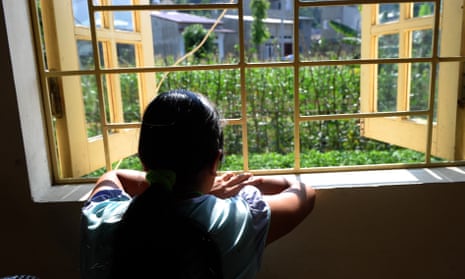In the Vietnamese community it is known as the “VIP” route – an illegal entry into the UK on a flight using someone else’s passport or a doctored diplomatic one.
For the majority who do not have the means of affording it however, the clandestine alternative involves crossing the channel in the back of a lorry and facing the risk the journey could end in a tragedy like the one that unfolded last week.
That’s according to a source familiar with the recent case of two Vietnamese teenagers who were taken into the care of social services in the UK after travelling from the other side of the world to work in Britain’s nail bar industry.
“One of the girls said she went from Vietnam to China and worked there for about a year and a half,” said one member of the community who was familiar with their cases and who added that they were unaware of last week’s tragedy, when 39 bodies were found in a back of a lorry in Grays, Essex.
“Then she went from China to Russia, where there was a holding place for people waiting to go further. From the holding place a new journey would start about once a month. Her journey was divided into very different stages, and in every stage she stayed with Vietnamese people.”
In most cases, the source added, those who make the trip in a lorry were dropped off not too far from the port of entry, before being left to make their way onwards and into the community in Britain.
“We were told by one of the girls that they were dropped off and left on their own and then found their way into a town centre. In most big centres in the UK you’ll have nail shops, usually run by Vietnamese people. They said that they found a shop and went in.
“Conditions in the nail bar were very bad, obviously, but it is relative. What is bad here might be very good by Vietnamese standards, and especially if they come from a rural area.”
Apparently at least one of the girls wanted to stay in the UK. “She also came from the same province as the people who died in the lorry. The economic situation in that province is very bad.”
It’s not clear how the teenagers got on the radar of the police or the social services, who are now caring for them, but it’s clear they are not the only ones.
Figures released by the Home Office under the Freedom of Information Act disclose the cases of 121 Vietnamese nationals who were identified as possible victims of human trafficking last year.
Adults receive 14 days of what the Home Office calls “move-on” support including accommodation and subsistence, specialist assistance including counselling and access to physical and mental health care.
The numbers, released in February this year, are from a live database which is subject to change. Accurate statistics about the real numbers of trafficked Vietnamese people remain elusive, largely because most are hidden and undocumented.
According to the Salvation Army, which works with victims of trafficking, more Vietnamese men were referred to the charity between July 2018 and July 2019 than any other nationality. The charity worked with 209 people from Vietnam over that period, a 248% increase on the number referred five years earlier.
